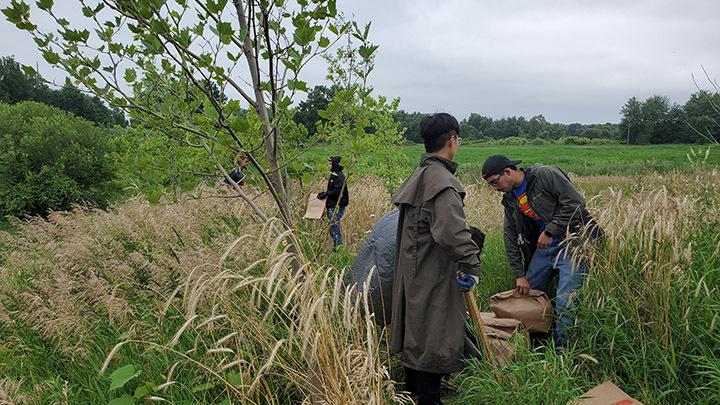Students engage in sustainability research

Each year, more than 130 Calvin University students majoring in the sciences collaborate with their professors on research projects, working toward solutions for a wide range of real-world problems. The students spotlighted below are using their research to investigate aspects of sustainability and creation care.
Energy Consumption Research
Mechanical engineering professor Matthew Heun is collaborating with professors from the University of Leeds on an ambitious five-year research project: they aim to compile a comprehensive database of energy consumption patterns across the globe in order to discover how to decouple energy consumption from the economy.
“Historically, we've seen that as the economy grows, energy consumption also grows with it,” Heun said. “If we want to tackle climate change, we need that energy consumption to go down. But it's never been done before. To figure out if it would be possible, we need to have a thorough picture of where energy is used in society.”
Finding the energy consumption information involves browsing articles related to different sectors such as agriculture, mining, quarrying, the textile industry, public buildings, heavy-duty vehicles, and the construction industry. This process can be tedious and difficult at times. Electrical engineering major Anjana Sainju ’23 says that her engineering background helped prepare her for the work.
“I think engineering homework makes us work,” she said, adding that engineering assignments help students to consider problems from multiple perspectives. “I think each question is designed that way, so that we think differently.”
Rain Garden Calculator Research
Civil engineering major Evan Hsu ’23 served on the Plaster Creek Stewards summer research team, and his work focused on the rain garden calculator system. The calculator system evaluates how well the rain gardens mitigate stormwater runoff into Plaster Creek, but it had been overly complicated and confusing.
Hsu was tasked with redesigning the system to make it more user-friendly. He was able to create a one-page view where all of the necessary information is immediately accessible.
Hsu said that one of the most rewarding parts of his project was collaborating with other student scientists and being able to see the real-life impact of their collective work.
“The rain garden team will have a bunch of different members. Some will be actually mulching it or putting compost and planting it. Somebody will be designing it, and there'll be an engineer that will need to make sure it works and make sure the equations are right. The engineer’s part is very vital, as well as all the other roles, in order for this whole strategy to work,” he said.
Planting Native Trees Research
Martin Vanderschoot served on a team of five students who focused on tree research at Plaster Creek this summer. In collaboration with Plaster Creek Stewards, native trees had previously been planted in November 2020 near the headwaters of the creek. Vanderschoot and his team were tasked to collect data about these trees and initiate a long term study of data collection.
“Ideally, we're going to try and collect data two to three times per year,” said Vanderschoot. “And we were looking at data relating to stomatal conductance—transpiration, how fast the trees are moving water around. And then some just general characteristics of how healthy they are, how big they are, what's the size of their canopy.”
In addition to trees, the student researchers also looked at Reed Canary grass, an invasive plant species.
“To sample that, we use a half meter by half meter area underneath these trees which are planted in clusters, Vanderschoot explained. “And the hope is that one day, we might be able to quantify if a particular species of native tree that we planted has a more pronounced effect on mitigating the populations of invasive grass.”
To learn more about scientific research at Calvin, visit calvin.edu/academics/stem-division/.






